Qualcomm Snapdragon 805 Performance Preview
by Anand Lal Shimpi on May 21, 2014 8:00 PM EST- Posted in
- Tablets
- Snapdragon
- Qualcomm
- Mobile
- SoCs
- Snapdragon 805
GPU Performance
3DMark
Although it's our first GPU test, 3DMark doesn't do much to show Adreno 420 in a good light. 3DMark isn't the most GPU intensive test we have, but here we see marginal increases over Snapdragon 800/Adreno 330. I would be interested in seeing if there are any improvements on the power consumption front since performance doesn't really change.
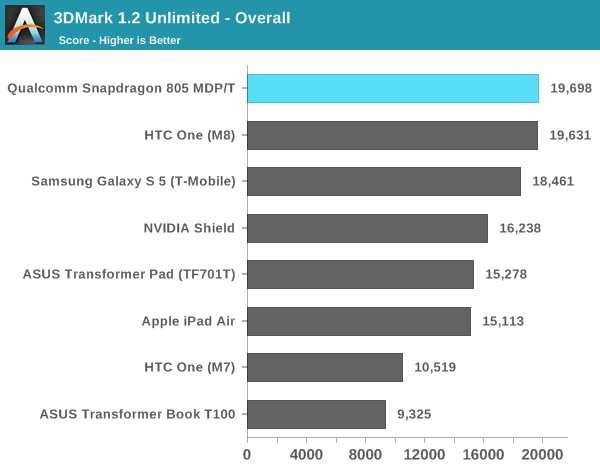


Basemark X 1.1
Basemark X 1.1 starts to show a difference between Adreno 420 and 330. At medium quality settings we see a 25% increase in performance over the Snapdragon 801 based Adreno 330 devices. Move to higher quality settings and the performance advantage increases to over 50%. Here even NVIDIA's Shield with Tegra 4 cooled by a fan can't outperform the Adreno 420 GPU.
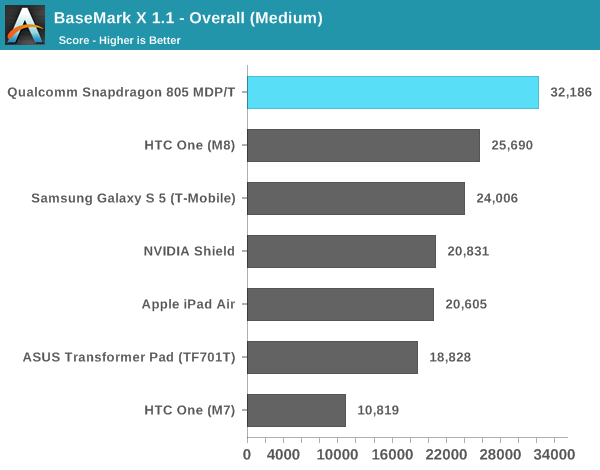
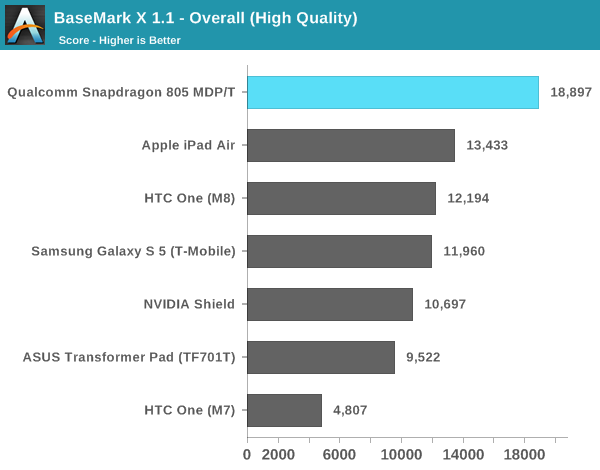
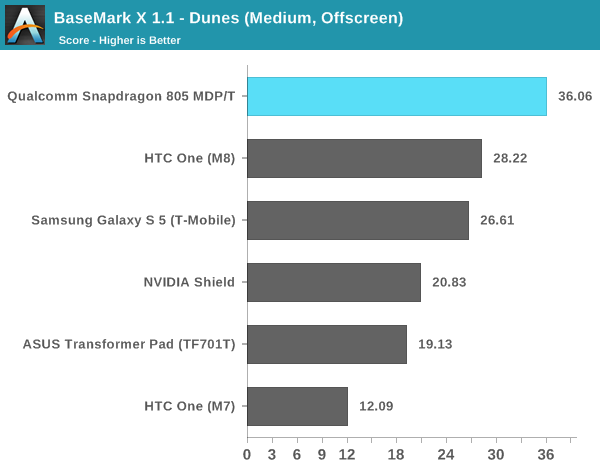
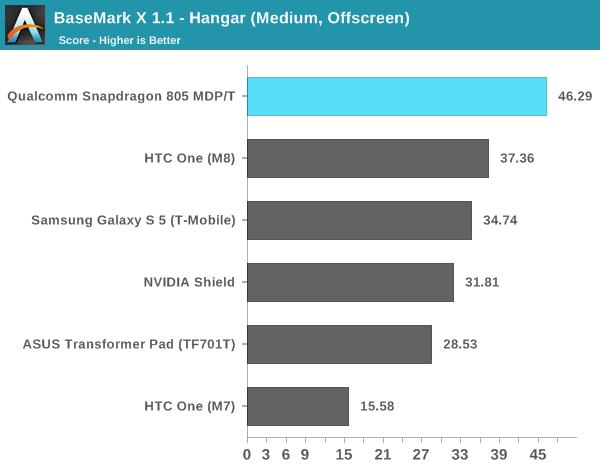


GFXBench 3.0
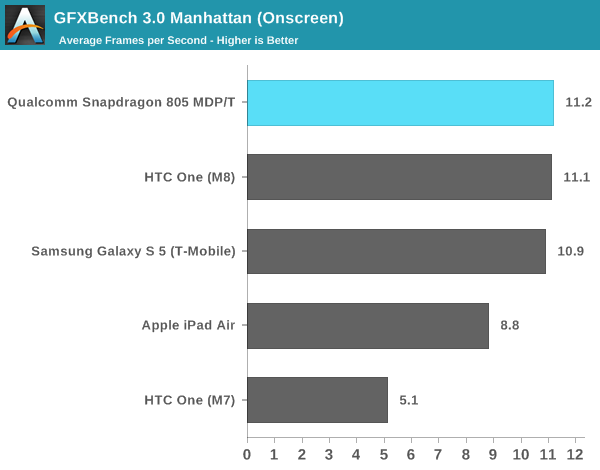
Manhattan continues to be a very stressful test but the onscreen results are pretty interesting. Adreno 420 can drive a 2560 x 1440 display at the same frame rate that Adreno 330 could drive a 1080p display.
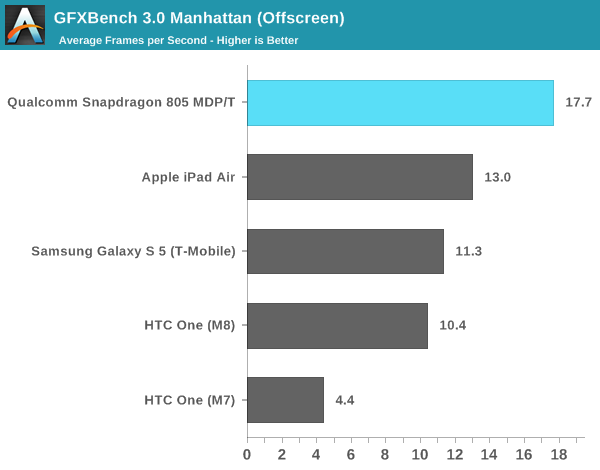
In an apples to apples comparison at the same resolution, Adreno 430 is over 50% faster than Adreno 330. It's also faster than the PowerVR G6430 in the iPad Air.
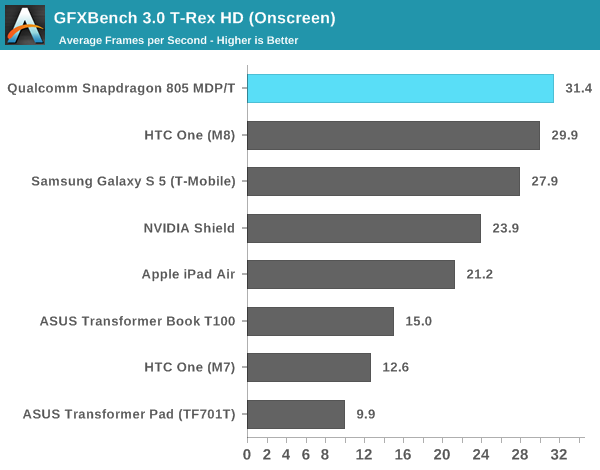
Once again we see an example where Adreno 420 is able to drive the MDP/T's panel at 2560 x 1440 at the same performance as Adreno 330 can deliver at 1080p
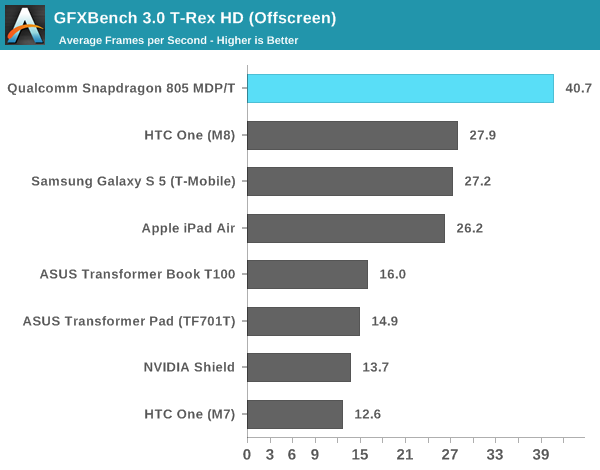
At 1080p, the Adreno 420/S805 advantage grows to 45%.
I've included all of the low level GFXBench tests below if you're interested in digging any deeper. It's interesting that we don't see a big increase in the ALU test but far larger increases in the alpha blending and fill rate tests.
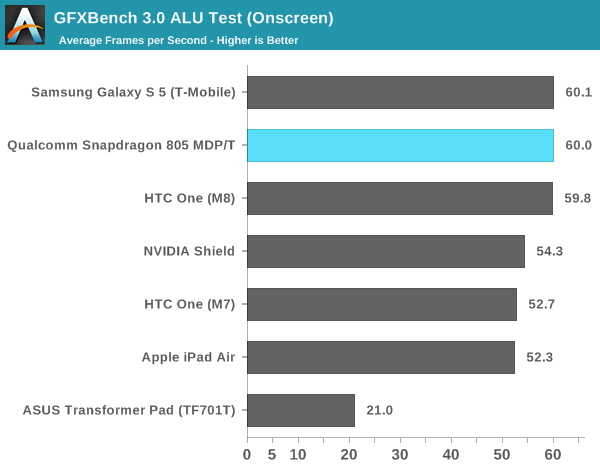
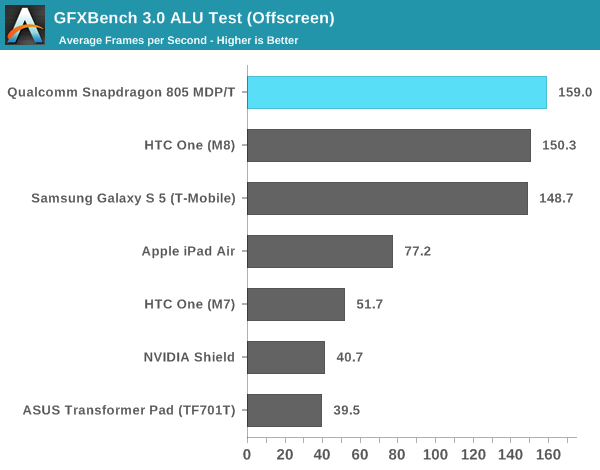
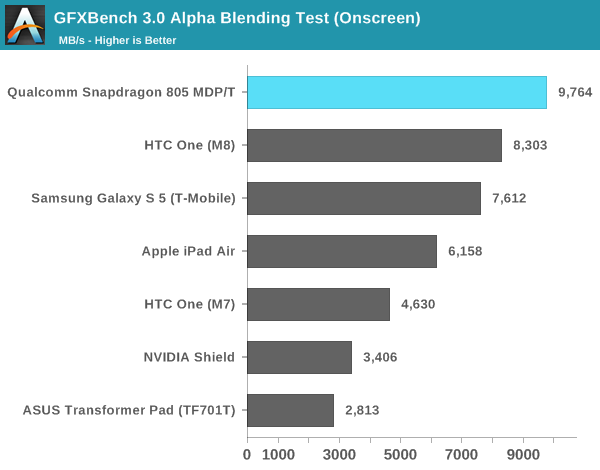

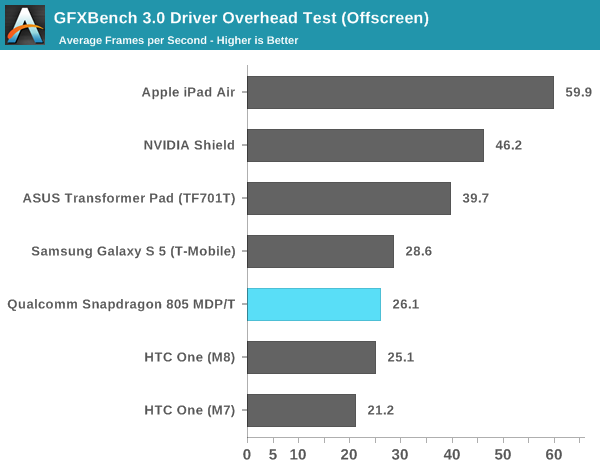
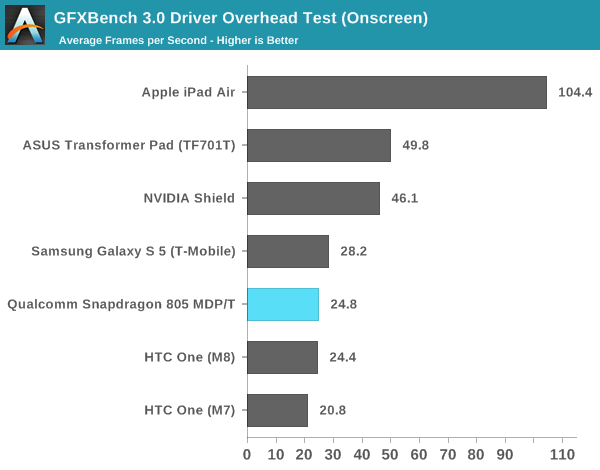
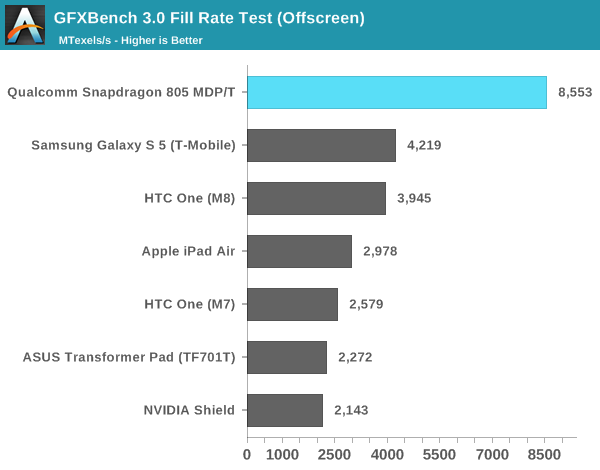
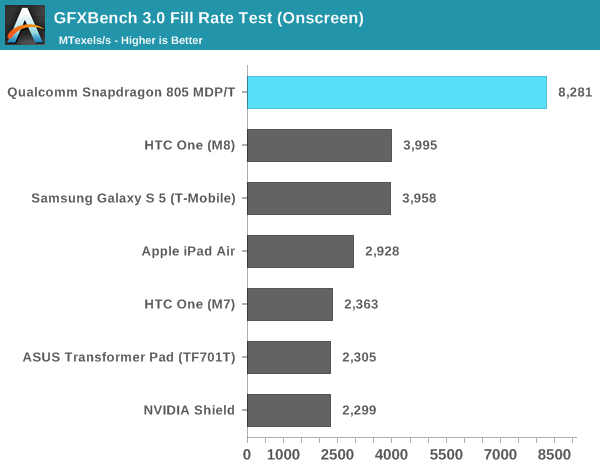










149 Comments
View All Comments
grahaman27 - Wednesday, May 21, 2014 - link
will apple?Thermogenic - Thursday, May 22, 2014 - link
It remains to be seen how good yields are for 20mm at TMSC. My guess id "not very" since Maxwell launched at 28mm.Kevin G - Thursday, May 22, 2014 - link
The low end Maxwell parts also launched a bit earlier than expected. TSMC 20 nm wouldn't have been ready regardless of yields.The real question is if the bigger Maxwell chips will use 20 nm and when they're ready to ship.
kwrzesien - Thursday, May 22, 2014 - link
I'd really like to seem them go ahead and release the medium Maxwell on 28mm for a GTX760ti.testbug00 - Thursday, May 22, 2014 - link
3 28nm dies (GM107, GM204 and GM206). One 20nm die GM200 (210?)GM204/206 will be october at earliest, more likely later... Hopefully not 2015, but, it could end up 2015 :(
testbug00 - Thursday, May 22, 2014 - link
Maxwell was planned to (mostly) be on 28nm years back.Only Maxwell silicon not on 28nm is the one that would be to large (likely, 10-12 billion transistor chip)
name99 - Thursday, May 22, 2014 - link
OR Apple was willing to pay more than nV to secure access to the limited 20nm capacity...retrospooty - Thursday, May 22, 2014 - link
I am guessing not... These foundries all use same stuff. If 20nm isnt ready it isnt ready. There is pretty much TSMC, UMC (formerly AMD) and Samsung, and Intel that are capable of producing at Volume. Intel is obviously not part of this equation. I am not aware of any of the other 3 that are making 20nm chips at volume in 2014. They usually all 3 go in step at the same time. I am 99% sure the Apple A8 or whatever is in the next iPhone iPad will stil be 28nm.GC2:CS - Thursday, May 22, 2014 - link
But how they will make that compulsory 2 x jump then ? Not say its impossible on 28 nm but 20nm would help a lot. Also if 28 nm it will be samsung or TSMC ? Because TSMC has more matured 28 nm process than samsung even that could be possibly enough to make that 2x jump. And hell Apple got billions to spend... Why is 20 nm so much behind the shelude ? Isn't that just Apple with an secret exclusive multibillion deal sucking off the entire TSMC ?tuxfool - Friday, May 23, 2014 - link
Small Correction. UMC isn't former AMD. GF (Global Foundries) is former AMD